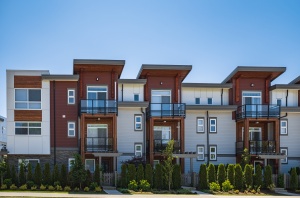Condo living offers a sense of community and a wealth of conveniences that family residences cannot always match. These include communal areas, lower maintenance responsibilities, and the support of a condo association. However, for individual owners, condos can be difficult to insure. Condo associations typically have master policies, but many owners are unaware of what coverage they are still responsible for.
Buying home insurance for condos is nuanced. This article walks condo owners through different coverages to clarify what they should look for when shopping for condo insurance in Illinois.
What is Condo Insurance?

Condo insurance encompasses the many policies specifically designed to cover condo unit owners. It differs from homeowners insurance in that condo insurance works with the condo association’s existing policy to give individual owners more control over their protection. Additionally, while residential policies include provisions for the land and the home, condo policies only protect the structure.
Condo insurance coverages often include:
- Interior structures, including walls, floors, and fixtures
- Personal property, including furniture, clothing, and other items
- Loss of use resulting from a covered event, such as a fire
- Liability protection to cover medical or legal expenses if someone is injured
- Loss assessment, which pays for shared damage to common areas or the building
In this way, condo insurance is similar to conventional home insurance policies, which also cover structures, property, and liability costs in the event of a covered incident. However, condo insurance also includes additional coverage that sets these policies apart from those that protect family residences.
What is a Condo Master Policy?
Unlike most residential homeowners associations, condo associations have master policies that provide certain coverage to individual unit owners. These policies are usually broken up into three types: walls-in, single entity, and all-inclusive policies.
Walls-in Policy

Walls-in or bare walls policies cover the exterior of the condo and the structures that are collectively owned between the units. This means that walls-in policies do not cover fixtures, appliances, or belongings in the individual units. They only cover communal structures such as walls, lighting fixtures, piping, wiring, and floors.
Single Entity Policy
A single entity policy covers everything originally part of the shared areas while adding coverage for the individual units, including certain fixtures and original appliances. However, these policies do not include individual belongings like furniture. Improvements or additions made to individual units would also not be covered.
All-inclusive Policy
All-inclusive policies cover the original appliances, fixtures, and installations in the condo. They cover the entire original structure, including the cost of repairs needed to return these structures to their original state after a covered event. However, all-inclusive policies still do not cover individual belongings or improvements and additions made by the condo owner.
Condo owners in Illinois should ask their condo association about the type of master policy they have in place to gauge their current level of protection. For example, if the association has a less inclusive policy that only includes walls-in coverage, the condo owner’s appliances may not be covered.
Coverage Differences and Policy Considerations

To protect their individual units, owners supplement their condo association’s insurance plans with individual policies. These plans must acknowledge the coverage differences between individual and association insurance protection by focusing on these essential features:
- Dwelling coverage, which varies based on the amount of the unit the owner is responsible for
- Deductibles, which may be transferable from master policies to individual owners through loss assessments
- Improvement coverage, which covers the cost of upgrading the condo
- Flood coverage, which may be excluded from association insurance coverage
- City ordinances, which may enforce new building codes during repairs that can change how much of the damage is covered
- Umbrella insurance, which extends the condo owner’s protection beyond standard policy limits
- Scheduled personal property, which covers the replacement cost of high-value items such as jewelry, electronics, and instruments, which is not covered by condo master policies
In the event of a claim, the condo owner and condo association are responsible for different aspects of the property. The condo owner is responsible for their personal property, as well as damage to fixtures that are excluded from the master policy. The association is responsible for the structure, common utilities, and shared areas. Knowing the difference between these coverages is essential to remaining protected and avoiding out-of-pocket costs.
Contact Pro Insurance Group to Keep Your Condo Protected
Condo association insurance policies often contain coverage gaps that leave condo owners responsible for out-of-pocket repair and replacement costs, even after a covered event. Our advisors at Pro Insurance Group help condo owners in Illinois find the right individual condo insurance to fill these gaps. Home and condo insurance differ in many important ways, but our experienced local insurance advisors help condo owners recognize the insurance they need to protect their assets, furniture, and belongings.
Contact our team today to learn more about the differences between home and condo insurance and how to customize insurance plans to protect your investment.
